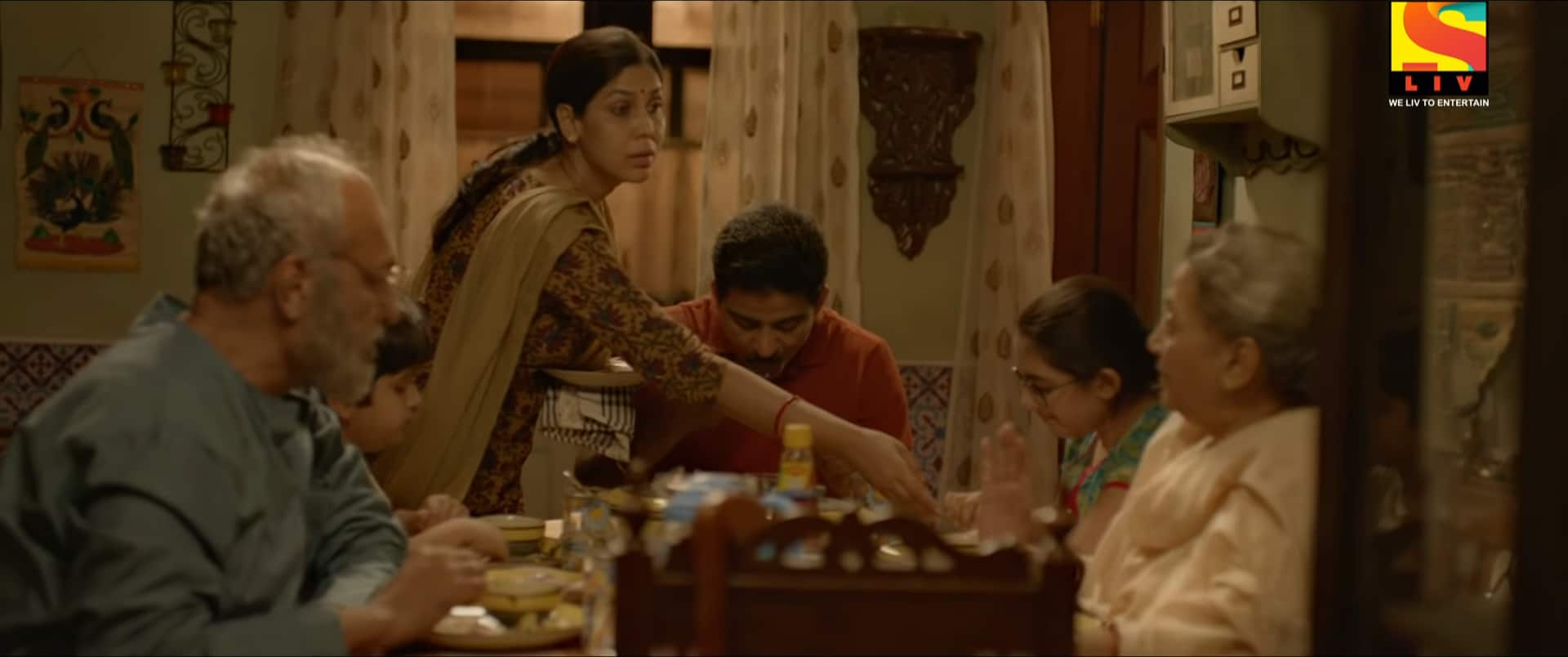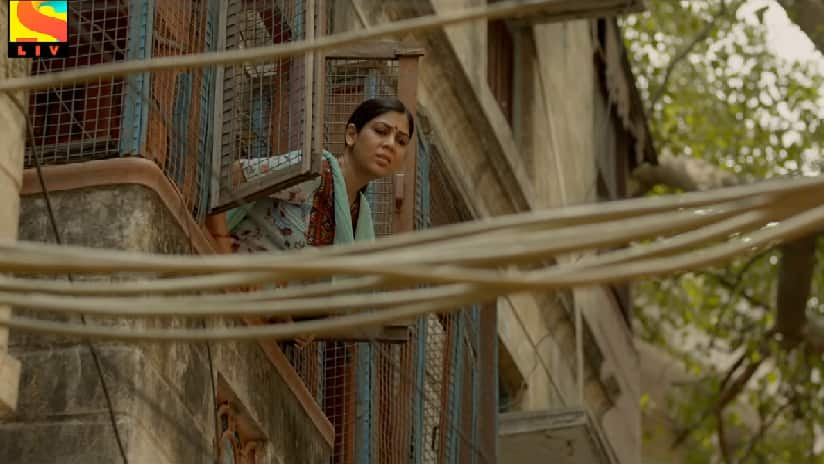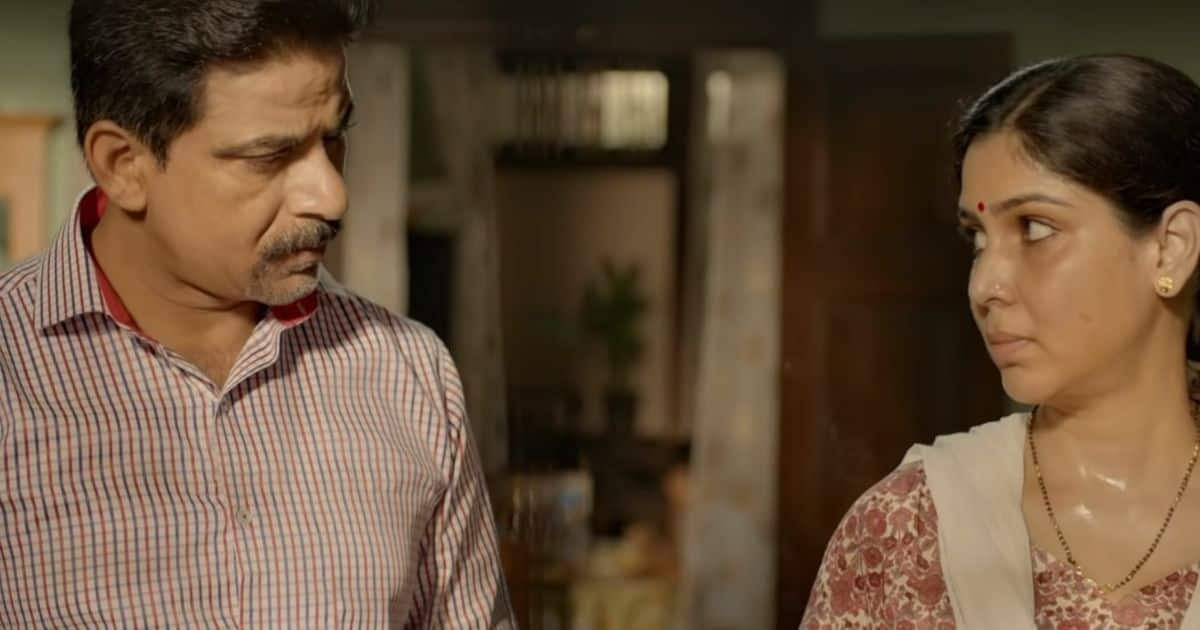Language: Hindi At a recent press conference for the social drama _Thappad_ , director Anubhav Sinha and Dia Mirza engaged in the ‘housewife’ versus ‘homemaker’ debate. While Dia argued it is “high time we stop calling them housewives,” the latter proclaimed it is the trapping of patriarchy to dub women as goddesses, telling them they have “more tolerance” and are responsible for “saving the house,” as he opposed the usage of the term ‘homemaker.’ Director Ashwiny Iyer Tiwary, along with husband and fellow director Nitesh Tiwari, has attempted to uncover the politics behind the “deification of woman of the house,” and how it reduces the relentless labour that goes behind running a household to a “woman’s duty” in her International Women’s Day tribute, titled Ghar Ki Murgi. In a cleverly-written short (penned by Nitesh), the film shows the value (both symbolic and arithmetic) of work performed by women who manage the house. [caption id=“attachment_8140171” align=“alignnone” width=“1920”]  A still from Ghar Ki Murgi[/caption] Ghar Ki Murgi opens with the image of a whistling pressure cooker. The dal has boiled, and is now trickling out of the vent pipe. While the kitchen bustles in action, the rest of the household — the husband Sandeep (Anurag Arora), the in-laws (Anuradha Kalia and Sanjiv Chopra), the elder daughter Minti (Mahi Burman), and the younger son Kabir (Kabir Khanna) — slumbers in peace. Disheveled and perpetually-on-the-run, it is only when Seema (Sakshi Tanwar) switches off the burner that the crisis is averted.
It is a potent image — even as the dutiful Seema turns off the gas, we understand she is the embodiment of the kitchen utensil, waiting for an imminent explosion that is long overdue. She is the titular ‘ghar ki murgi dal barabar,’ the metaphorical dal inside the cooker, which just wants to let some steam off.
From making breakfast, collecting milk from the milkman, shopping for groceries, serving her in-laws’ tea at regular intervals, running with her kids to the school bus in order to drop them off, tutoring them after school, drying clothes, accompanying her father-in-law for evening walks, massaging her mother-in-law’s feet while humouring her addiction to TV soaps, serving dinner to the rest of the family, her days are marked by a vicious cycle of domestic duties that others refuse to indulge in. [caption id=“attachment_8140151” align=“alignnone” width=“824”]  Sakshi Tanwar in a still from Ghar Ki Murgi[/caption] On occasions she chooses to voice her irritation for not getting a smidgen of help from her husband, he jokes with their kids that one should not “touch the honeycomb,” lest be bitten by the enraged bees. She eats dinner alone in the half-lit dining room as her family gathers around the TV in the drawing-room for their customary family time. Seema’s only confidante is Malti, their domestic help. They are united by a shared sense of marginalisation. Although indispensable to everyone around them, their contribution slips into obscurity as soon as they move on to the next chore. The only moments when Seema basks in a sense of accomplishment is when she stashes her earnings from working at a parlour inside a container. In 2012, Gauri Shinde made a spectacular profile of a taken-for-granted woman in English Vinglish. Her emancipation came from a four-week-long spoken English class, which made her (and her family eventually) realise her _laddoo-_making business was not just a trifle hobby, but a profit-earning entrepreneurial venture. In Pinni (a short in the anthology _Zindagi inShort_ ), director Tahira Kashyap’s protagonist also undergoes a journey of liberation after sustained attempts at making her husband realise her value in his life.
Tiwary (Nil Battey Sannata- and Panga -fame), whose directorial voice also tends to spotlight women occupying the peripherals, takes a matter-of-fact approach to address the elephant in the room — just how much is the monetary worth of the labour put in by a woman behind the smooth functioning of a house?
Ghar Ki Murgi is not riddled with multiple subplots, characters or twists. It rests on the one defining turning point — when Seema, frustrated with being oh-so-casually dismissed by those she serves on a daily basis — informs her family she wants to take a break, and go on a solo vacation to Goa. Her declaration is first met by her husband with a scoff —“Break from what?, You’re sitting at home all day!,” he contemptuously says. As days pass, and Seema remains steadfast on her plan, the family scrambles to delegate her duties to others. [caption id=“attachment_8140141” align=“alignnone” width=“1200”]  A still from Ghar Ki Murgi[/caption] Tiwary takes care to strike a balance between making Ghar Ki Murgi impactful within its short runtime and not ridding it with long, familiar monologues on women’s agency. Seema is always sweating. As opposed to the others in the family, who are seen sitting in almost every scene of the film, Seema is seen resting only when she is drinking a glass of water; as if to say they may be hustling in the outside domain but the running-around inside the house is reserved only for Seema. Emotionally-charged manifestos on unpaid labour, thus, never become a crutch for Tiwary’s narrative. Instead, she turns her focus on the sheer enormity of the fee Seema would have been entitled to, had she charged for the numberless chores she performs for the house every single day. As a film that hopes to change the prevalent mindset of society-at-large, the ending of Ghar Ki Murgi may feel contrived to suit the happily-ever-after template of mainstream Bollywood films. Change is not affected in a day.
But what the film successfully does is put its viewers ill-at-ease. It makes us question the status quo in our own household. It makes us accountable for those many, many moments in the film, and those beyond it, where we may have conducted ourselves in a similar, non-empathetic manner.
And what else is a film but a way to nudge society from its wakeful slumber? Is Ghar Ki Murgi, then, the pressure cooker, patiently whistling away in the kitchen, hoping to be turned off by someone before the dal melts? Ghar Ki Murgi is now streaming on SonyLiv and YouTube. Rating: **** (All images from YouTube)


)
)
)
)
)
)
)
)
)



